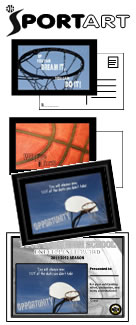 The basketball pick and roll play is a major part of almost all offenses ever created and it's vital you understand it's fundamentals. The whole idea is to help offensive players get free from tough defenses. Once free, the offensive player should have a nice, open look at the basket. Before you can execute a good pick and roll you must understand the fundamentals that make the play great. Some teams use the pick and roll, yet fail to get a good shot, why? The basketball pick and roll play is a major part of almost all offenses ever created and it's vital you understand it's fundamentals. The whole idea is to help offensive players get free from tough defenses. Once free, the offensive player should have a nice, open look at the basket. Before you can execute a good pick and roll you must understand the fundamentals that make the play great. Some teams use the pick and roll, yet fail to get a good shot, why?
Setting a Good Screen
The screener should set their screen as close as possible to the defenders side. The legs of the screen should be wide with knees flexed an arms up in a huge stance. This makes your body big and allows the referee to see your hands. Too many players set screens weak, timid and small, thus getting no results. The hands are up and ready to catch the ball once the roll is made.
The screen must be held long enough that the defender is screened out of the play. Too many times the forward rolls before the guard is screened and no switch is needed to defend the play. The player with the ball should be out of the peripheral vision of the screener/roller before he executes his roll.
If the screen is not set in the proper place on the floor, the defense can easily adjust or does not need to adjust at all.
Making a Good Roll to the Basket
If properly set, the legs are wide at the screen, it is easier to make a wide roll. This helps to screen out the defender on a switch. Make the pivot on the foot nearest the basket throwing the outside elbow toward the basket with hand extended as a target for a pass. Always open up to the ball facing your teammate never losing sight of the ball. The butt should make contact with the defender being screened. If you can’t feel the defender you have no idea where they are. This puts the defender on the roller’s back should a switch occur. Even if the player with the ball shoots, the roller is in excellent rebounding position because he has the man on his back, boxed out.
Run the Defender into the Screen
The success of the pick and roll depends largely upon the player with the ball. The ball player must wait for screener to set before movement. Too many failures of this play occur because of the ball moving prior to screen is set. This can also create a fouling problem for your screener as the screener to moving into defender now. The player with the dribble must brush off their own screener thus not allowing the defender to slide through.
A successful pick and roll play may result in the screener being in position to receive a pass with a clear path for an easy shot, with the chance of drawing a foul as other defenders move towards the play to try to prevent penetration. It may alternately lead to the ballhandler being momentarily without a defender, and thus free to pass to any open teammate, or take an uncontested shot, which greatly improves the chance of scoring, again with the chance of drawing a foul as the screened defender hurries to get back into the play.
The success of the strategy depends largely on the ballhandler, who must recognize the situation quickly and make a decision whether to take the shot, pass to the screener who is rolling (if the defender switches) or pass to another open teammate (if other defenders come to help). The screener also must recognize the open spaces of the court to roll to and be alert to receive the pass and finish the play.
Here are a few reasons this play WILL fail:
Poor setting of the screen.
The screen is not set on the correct position on the floor.
The screen is not held long enough, screener leaves early.
Failure of player with the ball to maneuver his defender into the screen.
The player with ball does not wait for screen to be set properly.
The screener does not roll properly.
The pass is deflected or intercepted.
One, or both players, fail to take advantage of shifts made by defense.
Additional Pick and Roll Tips
+ When you're the one setting the pick, you can be called for a foul if you have your arms extended out from your body. You also can't move during the pick.
+ What you do have to do is keep both feet planted with both your arms close to your body and remain set in that position until your teammate has gone by you.
+ When you're the dribbler, it's important to pass as closely as possible to your teammate setting the pick while keeping control of the ball. The pick won't work if your defender isn't run into your teammate.
+ The play begins with a defender guarding a ballhandler. The ballhandler moves toward a teammate, who sets a "screen" (or "pick") by standing in the way of the defender, who is separated from the still-moving ballhandler. The defender is forced to choose between guarding the ballhandler or the screener. If the defender tries to guard the ballhandler, then the screener can move toward the basket, sometimes by a foot pivot ("roll"), and is now open for a pass. If the defender chooses instead to guard the screening teammate, then the ballhandler has an open shot.
+ The pick and roll is often employed by a shorter guard handling the ball and a taller forward or center setting the screen. The purpose is that if the taller defender switches to guard the ballhandler, then the offensive team can have favorable mismatches. The shorter guard has a speed advantage over the taller defender, while the taller forward has a size advantage over the shorter defender.
Defending the Pick and Roll Play
Many coaches believe the following three major ways to defend the Pick and Roll play:
- No switch
- Slide Behind
- Help and recover
No Switch (Belly up)
All players should be talking constantly on defense letting each other know what is going on. The defensive, "No Switch" option is the best because the defense never gets involved in a mismatch of heights, but it hard work!
The player guarding the ball must "belly up" to the dribbler by playing a little tighter and moving to get in position to get over the top of the screen. Using the hand nearest the screen also helps him to find the screen and know where to go. Do not grab, only feel. If your opponent’s offense isn’t strong, you can beat many screens this way, especially if the defense is communicating well. Talking on defense is one of the most important factors of any good defensive team.
The Slide Behind
Some coaches prefer to defend against the pick and roll by having the player guarding the ball step back and help the player guarding the screener. Unless the offensive guards shoot from the outside, this is not the best defensive option against the pick and roll. If the offense has strong outside shooting this may not work well.
Help and Recover (Hedging)
This is a combination of the “No Switch” and “Slide Behind” defensive options. The defender of the screener calls "Screen” and steps out and hedges in front of the ball handler forcing him to dribble wide around the screen or pick up their dribble in surprise. Once the ball handler goes wide or picks up dribble the two defenders quickly return to pick up their original players so not to get a mis-match in size.
Time to get to work,
Coach O
|





 The basketball pick and roll play is a major part of almost all offenses ever created and it's vital you understand it's fundamentals. The whole idea is to help offensive players get free from tough defenses. Once free, the offensive player should have a nice, open look at the basket. Before you can execute a good pick and roll you must understand the fundamentals that make the play great. Some teams use the pick and roll, yet fail to get a good shot, why?
The basketball pick and roll play is a major part of almost all offenses ever created and it's vital you understand it's fundamentals. The whole idea is to help offensive players get free from tough defenses. Once free, the offensive player should have a nice, open look at the basket. Before you can execute a good pick and roll you must understand the fundamentals that make the play great. Some teams use the pick and roll, yet fail to get a good shot, why? 